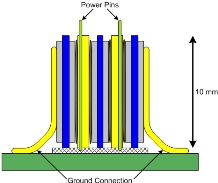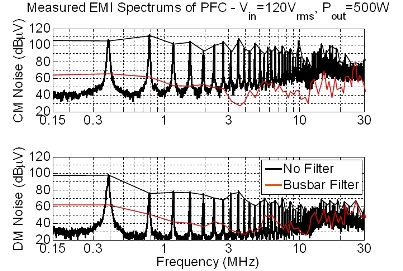RESEARCH
Integrated Busbar Transmission-Line EMI Filter Achieves 40 dB Attenuation

Classical filters have to pass the full power of the system and are designed as such; and as frequency increases, parasitics will always limit the operational bandwidth. Therefore, they cannot properly attenuate the noise at radio frequencies. The new filter is implemented as a simple, planar, low-cost, metal-ceramic structure. Multiple filtering elements sandwiched along with the primary power path form a complete EMI filter. The integrated planar power connection structure utilizes these normally harmful parasitic interactions to enhance the attenuation. The main power passes through the highly conductive paths whereas the filtering elements only handle the small absorbed interference power - a negligible fraction of the main power. This reduces the burden on thermal management and undesired bulky components. Furthermore, the attenuation at lower frequencies can be further improved by creatively utilizing interactions between the connection structure and the input power line. Using lossy connection methods for the high-frequency path as well as a symmetric grounding connection increases the attenuation. Integrating the filter directly with the converter reduces losses in the main power's conduction path.
If further enhanced, this technology can eliminate the need for additional electromagnetic noise filters, resulting in drastically improved power density, thermal management, and simplified manufacturability of electronic power converters. This structure is ideal for critical applications, such as hospitals, telecommunications, internet, and semiconductor industry, as well as many defense and homeland security applications.
























































































